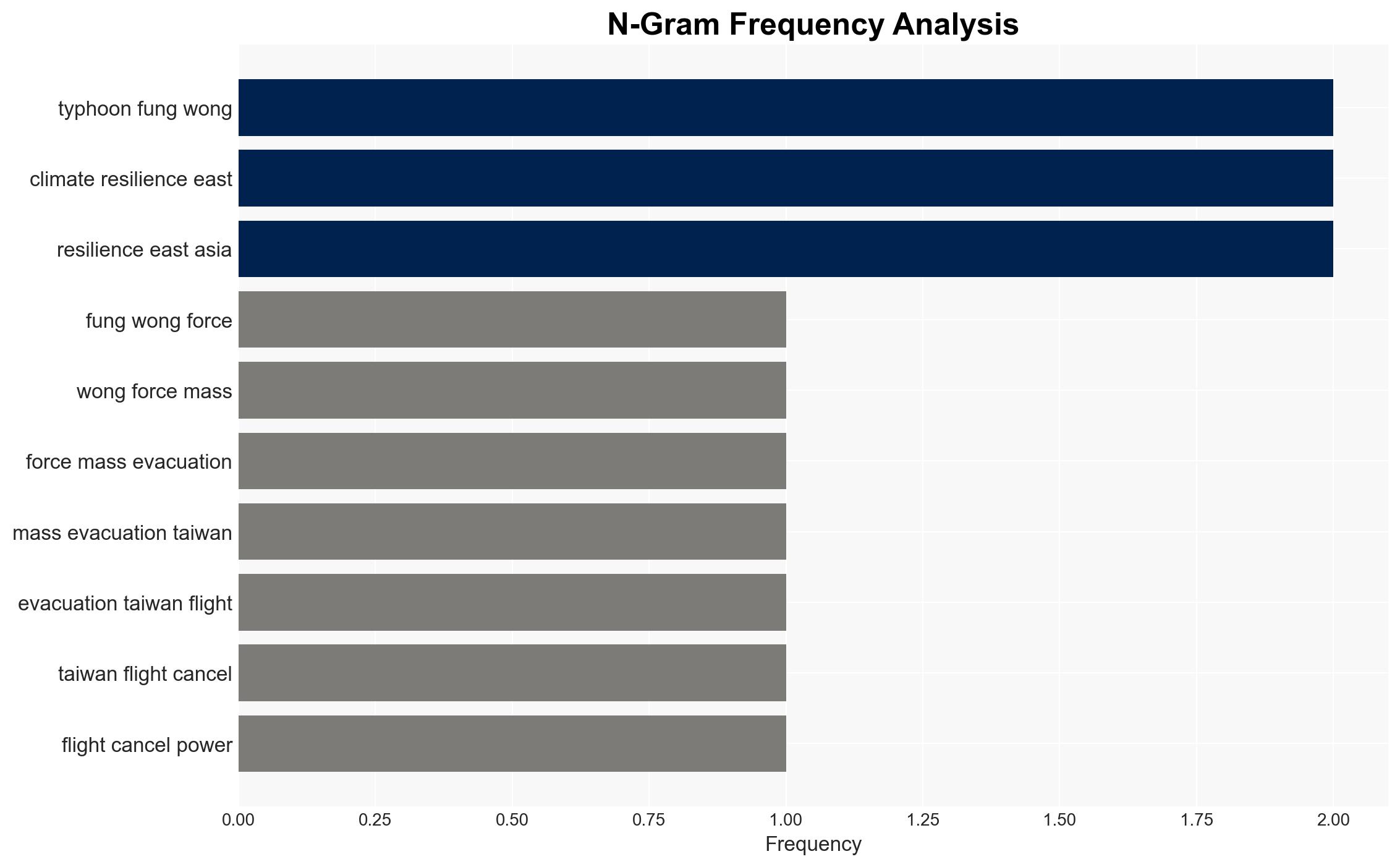Typhoon Fung-Wong Forces Mass Evacuations in Taiwan Flights Cancelled Power Lines Down – International Business Times
Published on: 2025-11-12
AI-powered OSINT brief from verified open sources. Automated NLP signal extraction with human verification. See our Methodology and Why WorldWideWatchers.
Intelligence Report: Typhoon Fung-Wong Forces Mass Evacuations in Taiwan Flights Cancelled Power Lines Down – International Business Times
1. BLUF (Bottom Line Up Front)
With a high confidence level, the most supported hypothesis is that Typhoon Fung-Wong’s impact on Taiwan highlights the increasing vulnerability of the region to extreme weather events, exacerbated by climate change. The strategic recommendation is to enhance regional climate resilience and disaster preparedness through international cooperation and infrastructure investment.
2. Competing Hypotheses
Hypothesis 1: Typhoon Fung-Wong’s impact is primarily a result of natural variability in weather patterns, and while severe, it does not indicate a trend of increasing frequency or intensity of such events.
Hypothesis 2: The impact of Typhoon Fung-Wong is indicative of a broader trend of increasing frequency and intensity of extreme weather events in the region, driven by climate change.
Hypothesis 2 is more likely given the pattern of increasingly severe weather events in East Asia, as noted by meteorologists and climate experts. The evidence of rising sea surface temperatures and the historical data on typhoon activity support this interpretation.
3. Key Assumptions and Red Flags
Assumptions: It is assumed that the data on typhoon frequency and intensity is accurate and that climate change is a significant factor influencing these patterns.
Red Flags: Potential bias in attributing all extreme weather events to climate change without considering other environmental or anthropogenic factors. There is also a risk of underestimating the role of local infrastructure and preparedness in mitigating impacts.
4. Implications and Strategic Risks
The immediate implications include disruption to transportation, power outages, and economic losses in Taiwan. Strategically, there is a risk of political pressure on the government to improve disaster response and infrastructure resilience. Regionally, the event could prompt increased dialogue on climate change mitigation and adaptation strategies. There is also a potential for cyber threats targeting critical infrastructure during recovery efforts.
5. Recommendations and Outlook
- Enhance regional cooperation on climate resilience and disaster preparedness, including joint exercises and information sharing.
- Invest in infrastructure upgrades to withstand extreme weather, particularly in vulnerable areas.
- Develop comprehensive communication strategies to ensure public awareness and compliance with evacuation and safety advisories.
- Best-case scenario: Improved infrastructure and preparedness minimize future impacts, and international cooperation strengthens regional resilience.
- Worst-case scenario: Continued severe weather events overwhelm existing systems, leading to significant economic and human losses.
- Most-likely scenario: Incremental improvements in infrastructure and preparedness, with ongoing challenges from climate change impacts.
6. Key Individuals and Entities
President Tsai Ing-wen: Leading government response and coordination efforts.
Taiwan Power Company: Responsible for restoring power and maintaining infrastructure.
China Airlines and EVA Air: Major airlines affected by flight cancellations and disruptions.
7. Thematic Tags
Climate Change, Disaster Preparedness, Infrastructure Resilience, Regional Cooperation
Structured Analytic Techniques Applied
- Adversarial Threat Simulation: Model and simulate actions of cyber adversaries to anticipate vulnerabilities and improve resilience.
- Indicators Development: Detect and monitor behavioral or technical anomalies across systems for early threat detection.
- Bayesian Scenario Modeling: Quantify uncertainty and predict cyberattack pathways using probabilistic inference.
- Network Influence Mapping: Map influence relationships to assess actor impact.
Explore more:
Cybersecurity Briefs ·
Daily Summary ·
Methodology





